Dedicated craftsmen and women battle against time itself, breathing new life into China's precious ancient artifacts, report Wang Kaihao, Zou Hong and Sun Ruisheng.
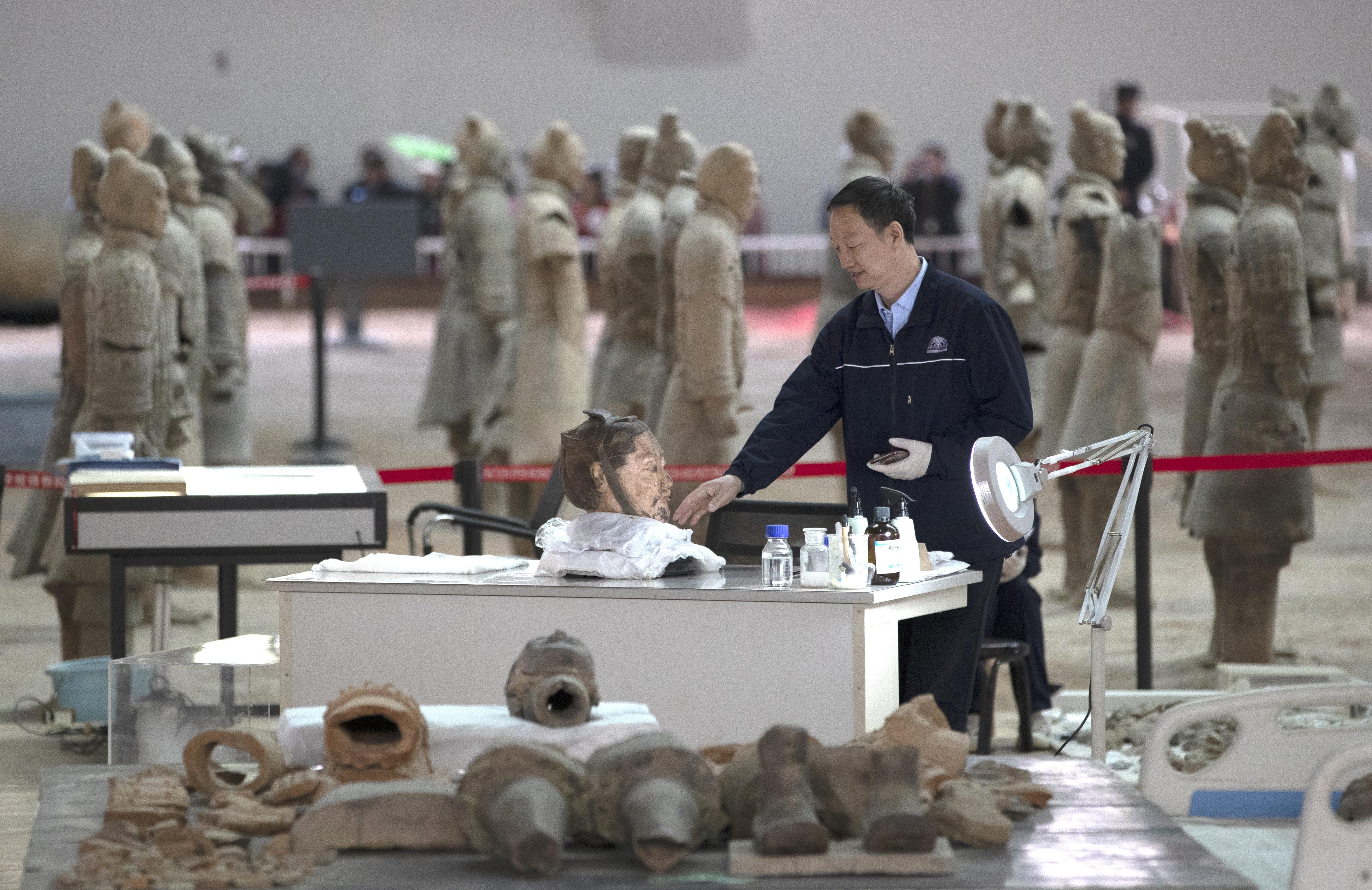 On March 31, veteran restorer Lan Desheng, 55, from Emperor Qinshihuang's Mausoleum Site Museum, examines a Terracotta Warrior at the institute in Xi'an, Shaanxi province. (ZOU HONG / CHINA DAILY)
On March 31, veteran restorer Lan Desheng, 55, from Emperor Qinshihuang's Mausoleum Site Museum, examines a Terracotta Warrior at the institute in Xi'an, Shaanxi province. (ZOU HONG / CHINA DAILY)
Editor's note: The 20th National Congress of the Communist Party of China set out a blueprint for China's path to modernization, with the aim of guiding the development of all walks of life in the new era and contributing positively to global progress. Through the year, China Daily will run a series of picture stories that highlight important waypoints on this journey. In this third installment, we focus on the conservators and restorers who combine traditional craftsmanship with cutting-edge technology to ensure the longevity of the nation's cultural treasures.
With a long history and rich cultural splendors, ancient China provided the world with an uninterrupted lineage of civilizations lasting for millennia that are still inspiring.
Thanks to the cultural relics our ancestors left behind, key events that might have influenced the destiny of a dynasty, or special moments in the lives of people long gone, come to life.
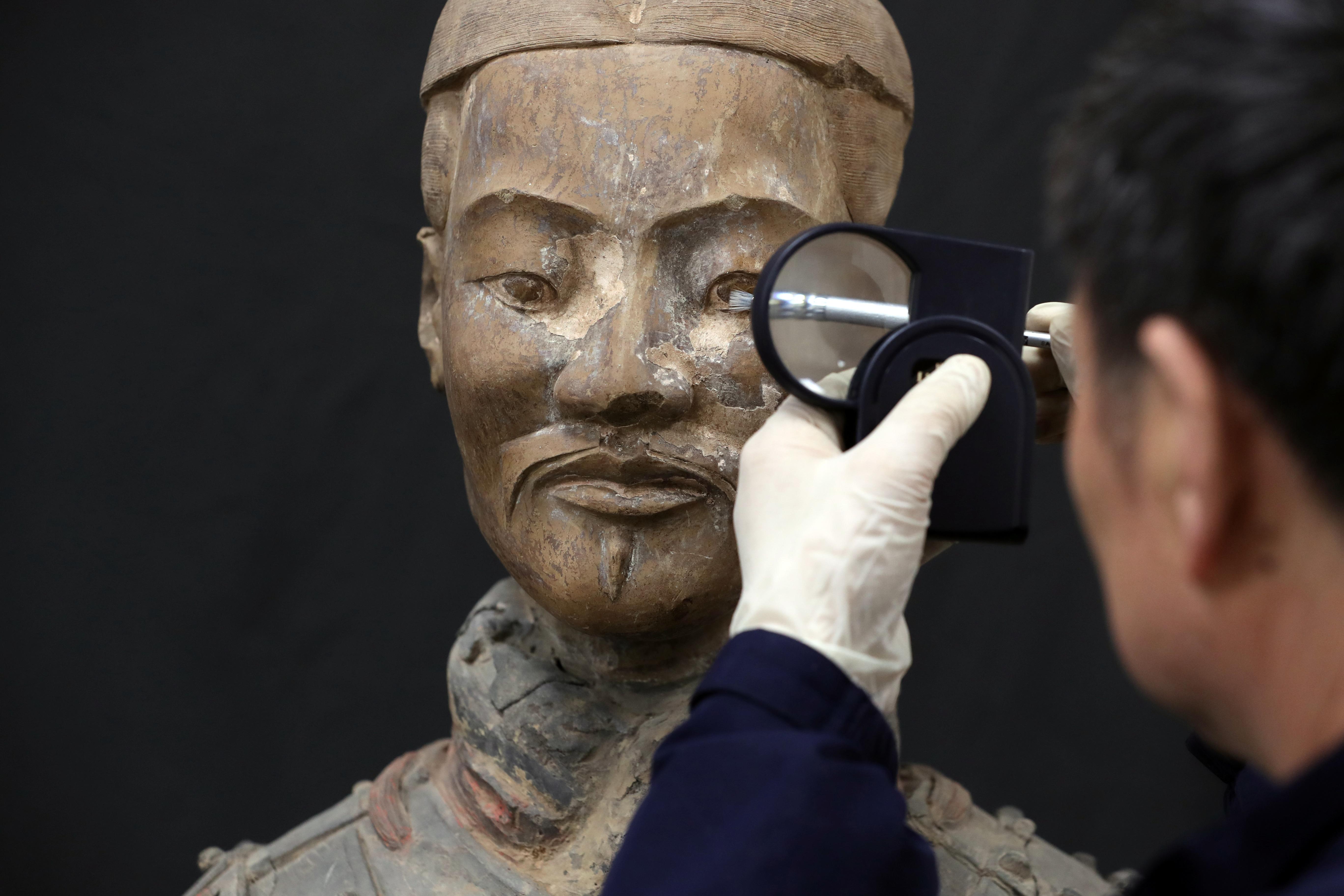 He applies an eye drop on a terracotta statue to clean the eye. (ZOU HONG / CHINA DAILY)
He applies an eye drop on a terracotta statue to clean the eye. (ZOU HONG / CHINA DAILY)
However, when we pay to admire, and in some cases be astounded by, such relics, we can hardly ignore the fact that, often, time has taken its toll on the relics, be they porcelain shards, fading murals or weathered roofs on ancient temples.
Fortunately, time has also witnessed the dedication and diligence of those who painstakingly keep the past alive and relevant. Their devotion is often counted in generations. Behind the polished museum exhibits, these are the people who wipe the dust of ages from the artifacts and give a second life to the items that have been silent observers of history.
They are, of course, the conservators and restorers of cultural relics. Just like medical practitioners who vow to spare no effort to save a patient, they, too, make diagnoses and tailor treatment to ailments of the nation's treasures. They combine traditional craftsmanship with cutting-edge technology to ensure their longevity.
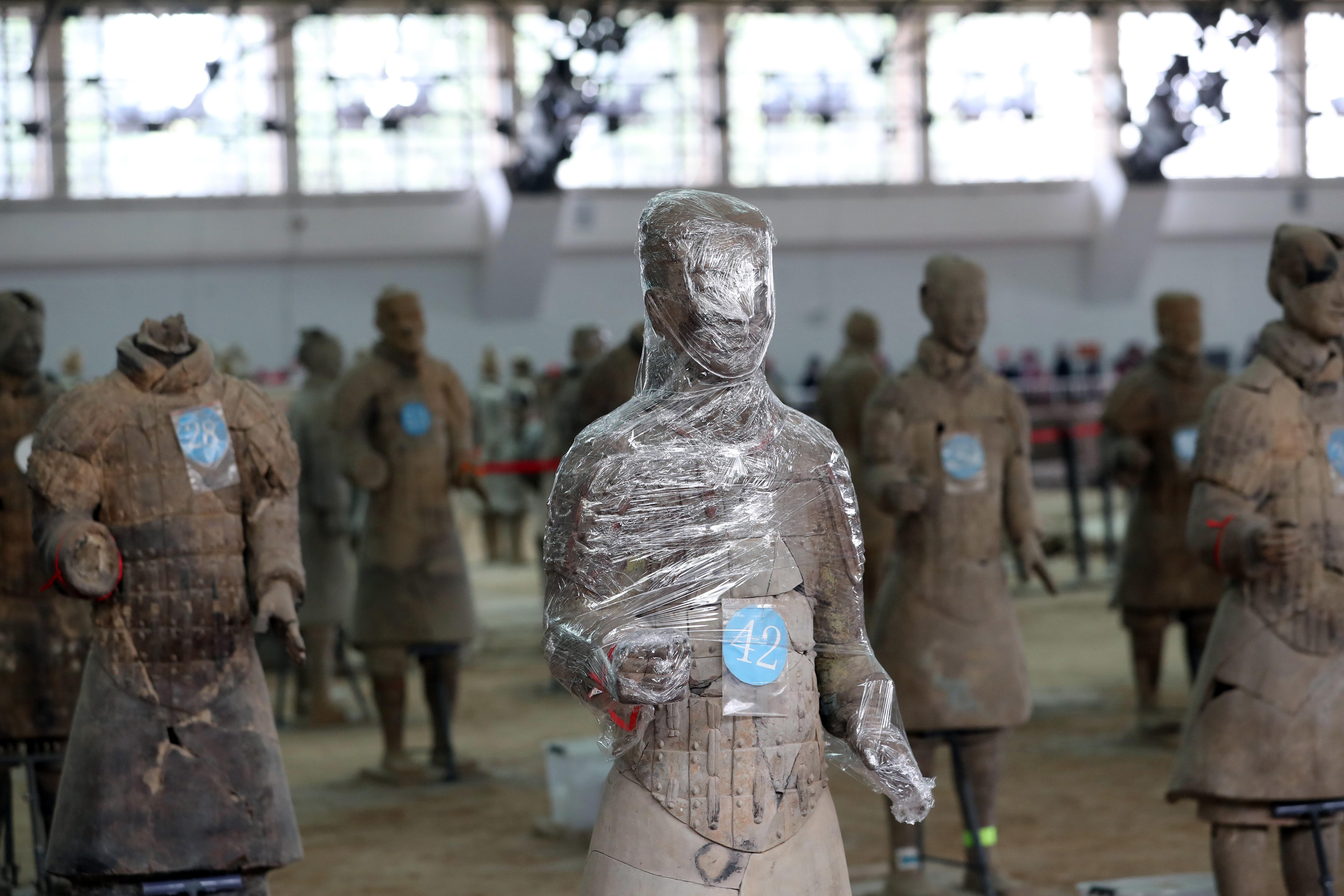 Thanks to his efforts and that of numerous conservators, many such statues are brought back to life after restoration. (ZOU HONG / CHINA DAILY)
Thanks to his efforts and that of numerous conservators, many such statues are brought back to life after restoration. (ZOU HONG / CHINA DAILY)
Their "patients" are often icons, like the grand palace at the Forbidden City in Beijing, the walls of Pingyao Ancient City in Shanxi province, millennia-old bronzewares, scarred with verdigris and a timeworn patina, or the magnificent underground legion of the Terracotta Warriors from the Qin Dynasty (221-206 BC).
Generation after generation, deft hands and keen eyes, powered by robust hearts and unbowed enthusiasm, have skillfully kept the twin wolves of damage and decay at bay.
According to the National Cultural Heritage Administration, an army of more than 160,000 people is engaged in cultural relic-related work nationwide, protecting the more than 108 million cultural relics, which are housed in China's public institutions, and the 767,000 "unmovable" monuments, ancient architecture, structures and heritage sites that are registered nationwide.
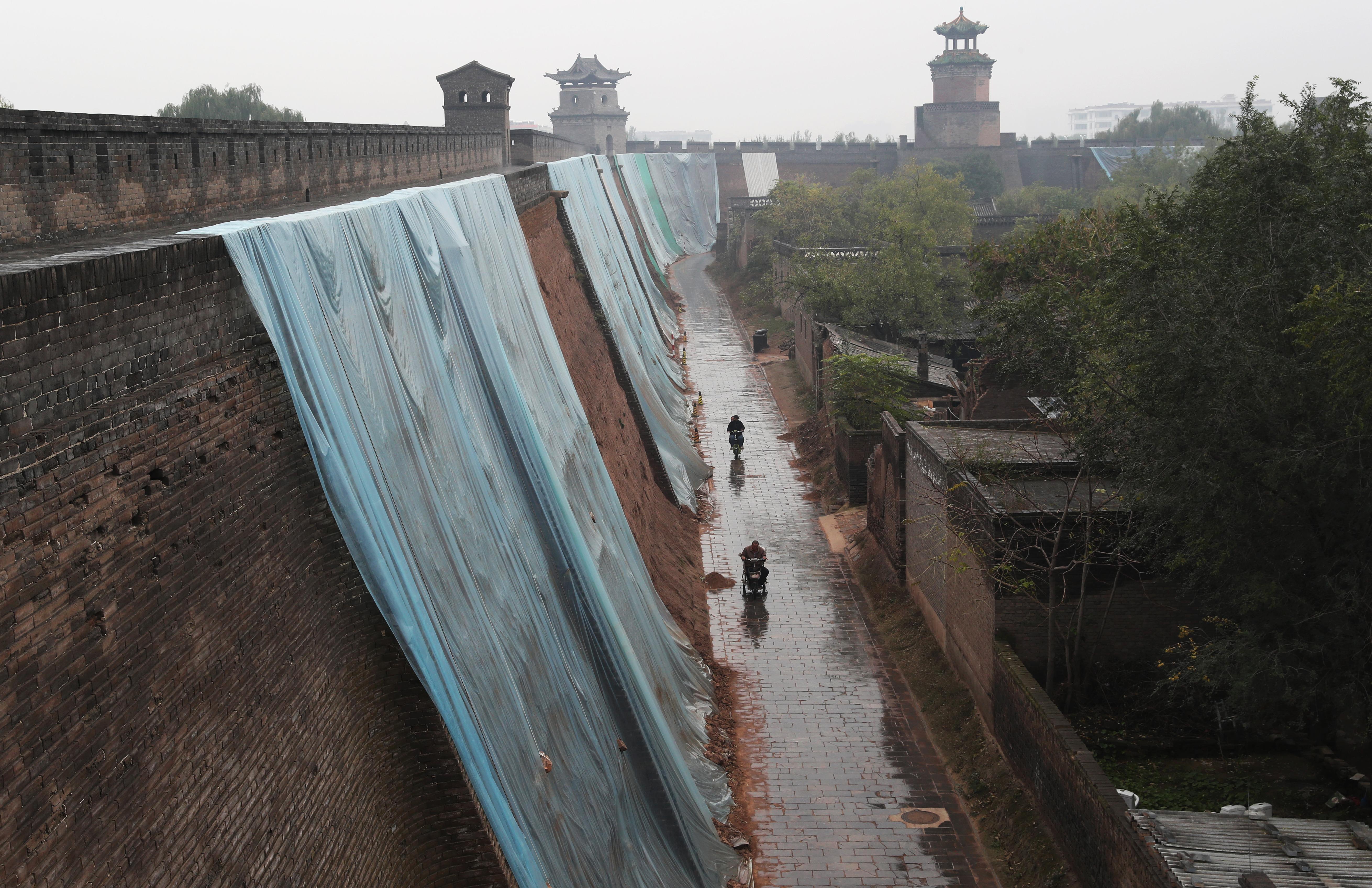 Plastic sheets are applied to the rammed earth of the city wall of Pingyao Ancient City, in Jinzhong, Shanxi province, on Oct 20, 2021. (ZOU HONG / CHINA DAILY)
Plastic sheets are applied to the rammed earth of the city wall of Pingyao Ancient City, in Jinzhong, Shanxi province, on Oct 20, 2021. (ZOU HONG / CHINA DAILY)
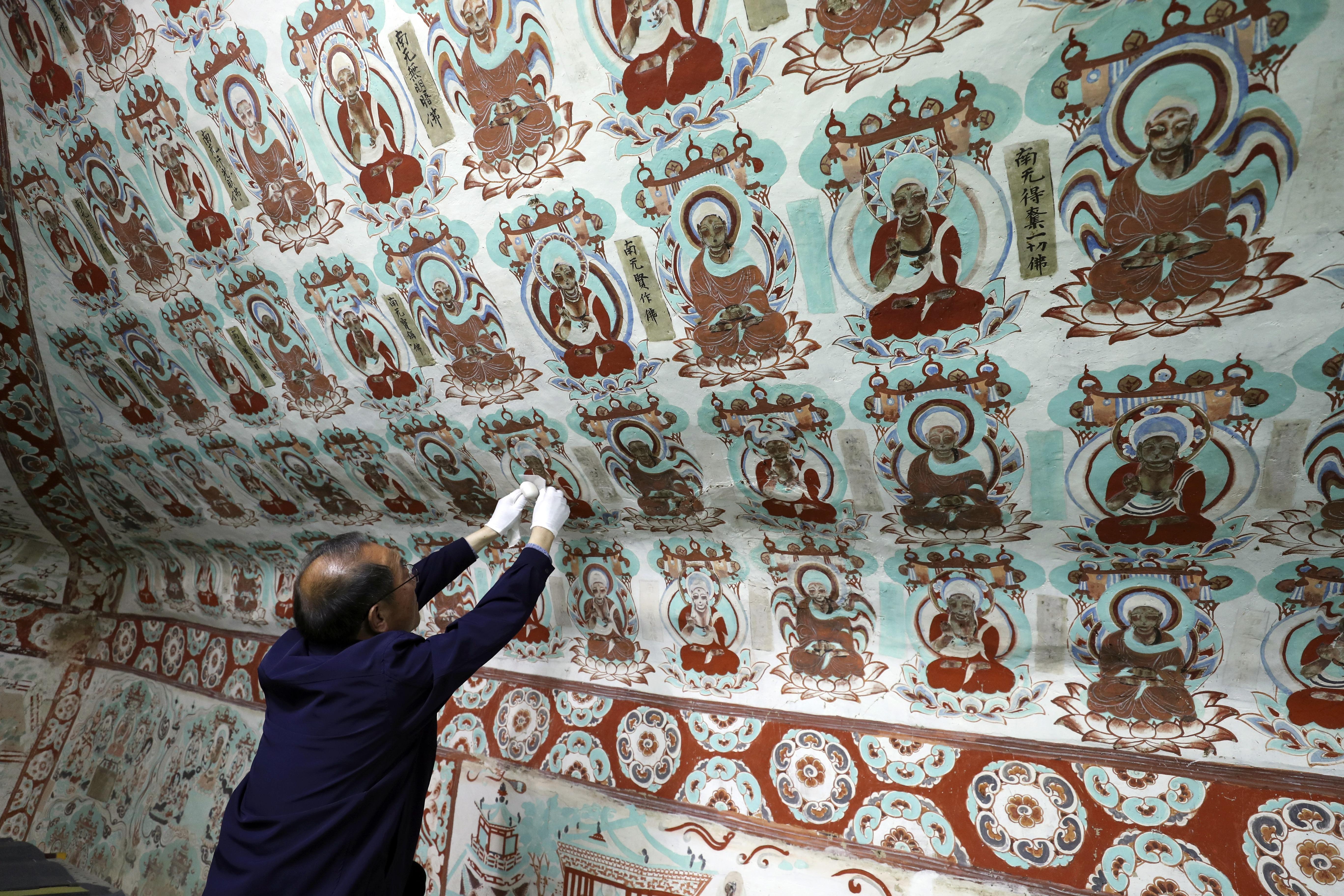 On May 16, Fan Zaixuan, 62, a restorer at Dunhuang Academy, works on a damaged mural at the Mogao Caves in Dunhuang, Gansu province. (ZOU HONG / CHINA DAILY)
On May 16, Fan Zaixuan, 62, a restorer at Dunhuang Academy, works on a damaged mural at the Mogao Caves in Dunhuang, Gansu province. (ZOU HONG / CHINA DAILY)
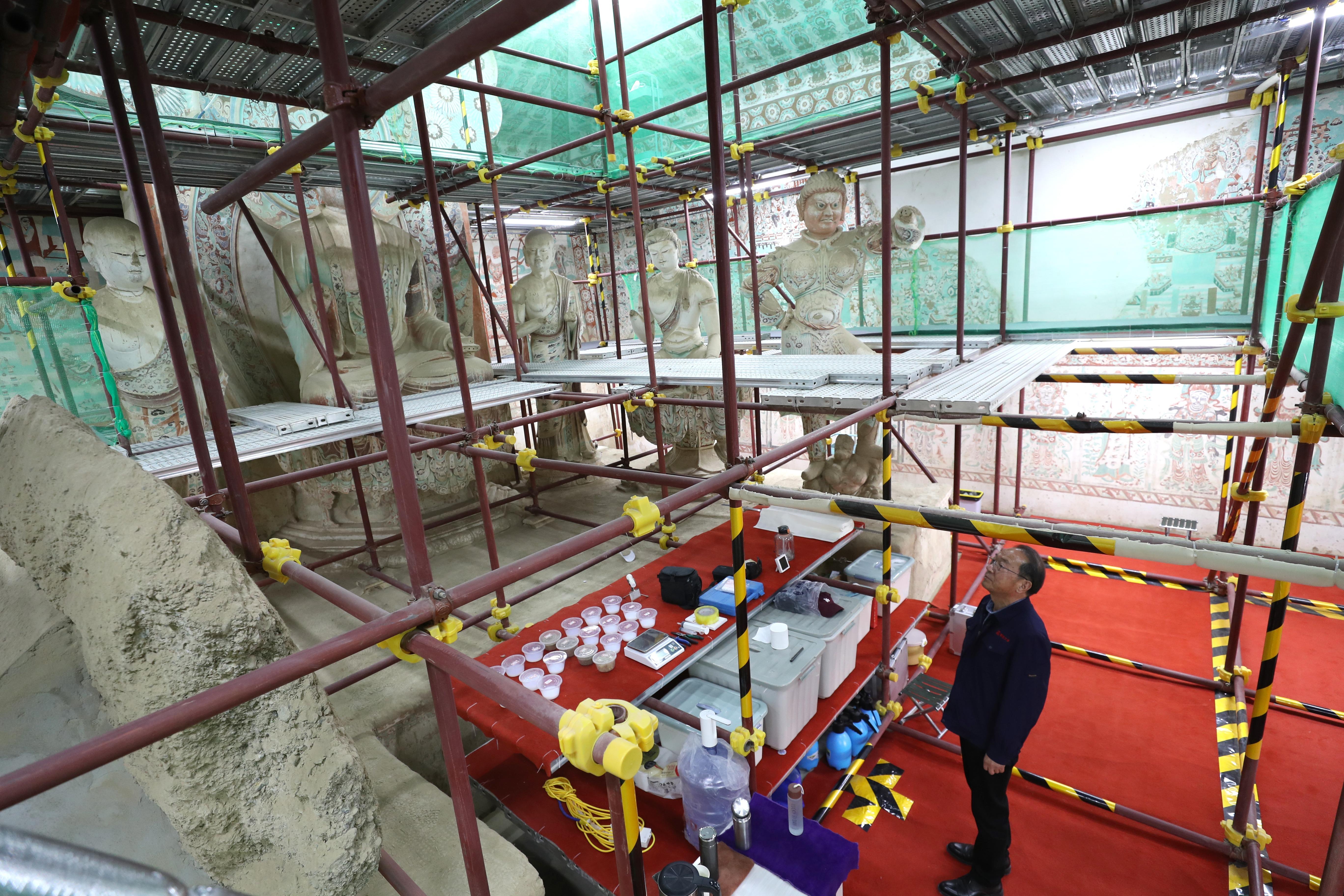 Fan working on the site of restoration. (ZOU HONG / CHINA DAILY)
Fan working on the site of restoration. (ZOU HONG / CHINA DAILY)
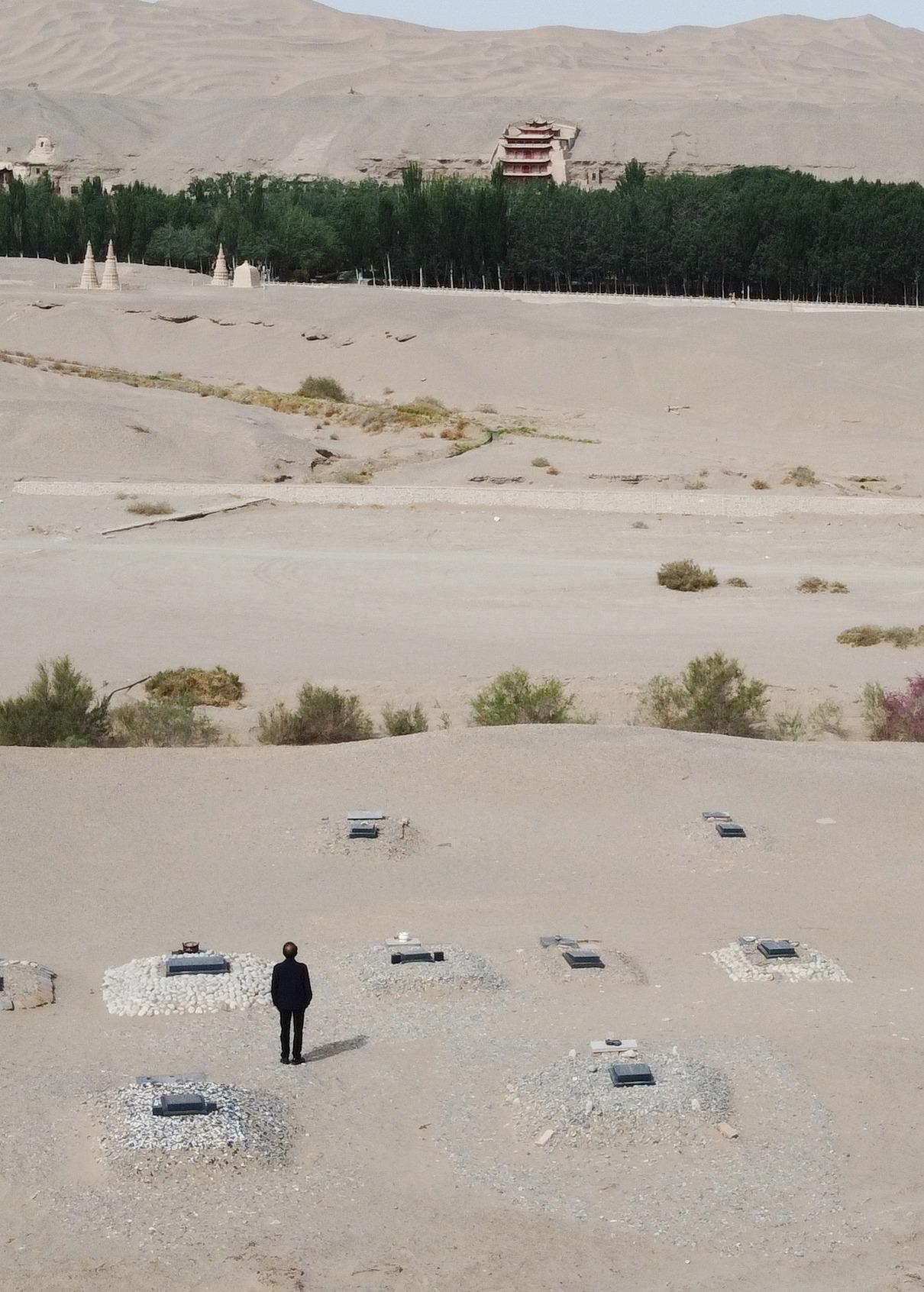 He often visits the public cemetery where the late conservators of the Academy have been buried, commemorating his predecessors, who seem to still guard the Caves. (ZOU HONG / CHINA DAILY)
He often visits the public cemetery where the late conservators of the Academy have been buried, commemorating his predecessors, who seem to still guard the Caves. (ZOU HONG / CHINA DAILY)
 A restorer working on parts of a Terracotta Warrior at Emperor Qinshihuang's Mausoleum Site Museum in Xi'an, Shaanxi province, on April 3. (ZOU HONG / CHINA DAILY)
A restorer working on parts of a Terracotta Warrior at Emperor Qinshihuang's Mausoleum Site Museum in Xi'an, Shaanxi province, on April 3. (ZOU HONG / CHINA DAILY)
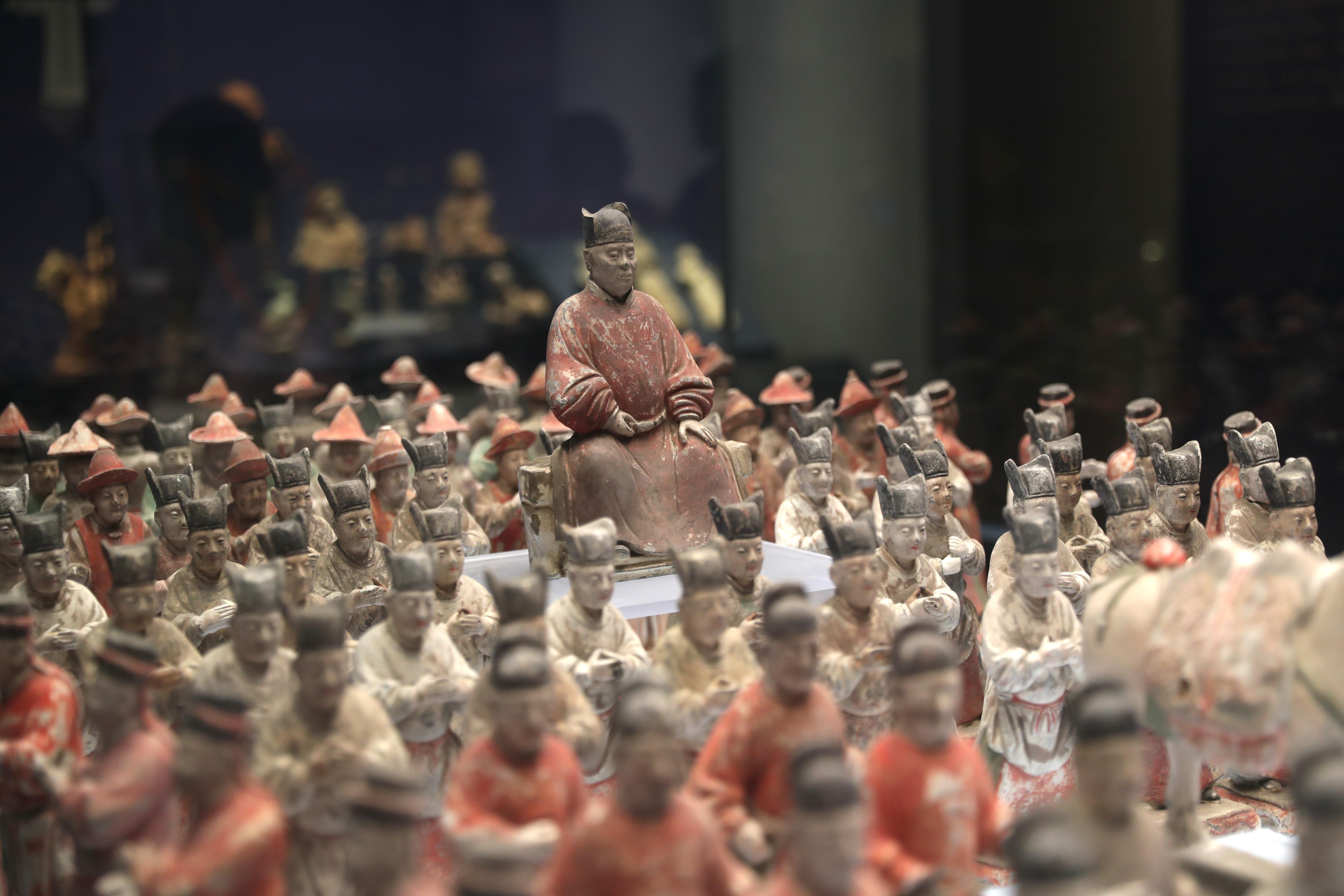 A collection of restored painted pottery figures from the Ming Dynasty (1368-1644) on display at the Shaanxi History Museum in Xi'an, on April 2. (ZOU HONG / CHINA DAILY)
A collection of restored painted pottery figures from the Ming Dynasty (1368-1644) on display at the Shaanxi History Museum in Xi'an, on April 2. (ZOU HONG / CHINA DAILY)
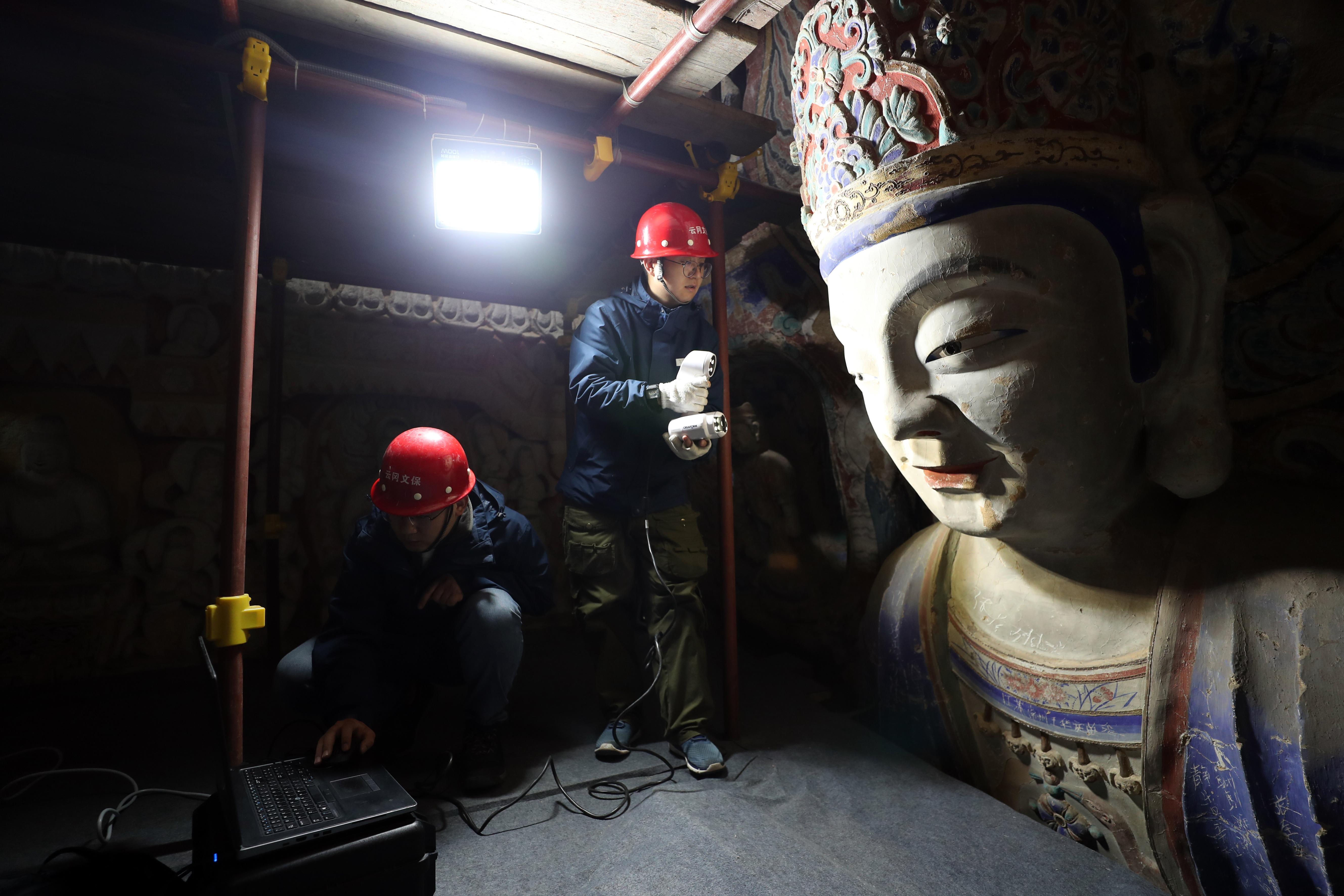 Two young restorers gather 3D data from a statue in Yungang Grottoes in Datong, Shanxi province, on April 6. (ZOU HONG / CHINA DAILY)
Two young restorers gather 3D data from a statue in Yungang Grottoes in Datong, Shanxi province, on April 6. (ZOU HONG / CHINA DAILY)
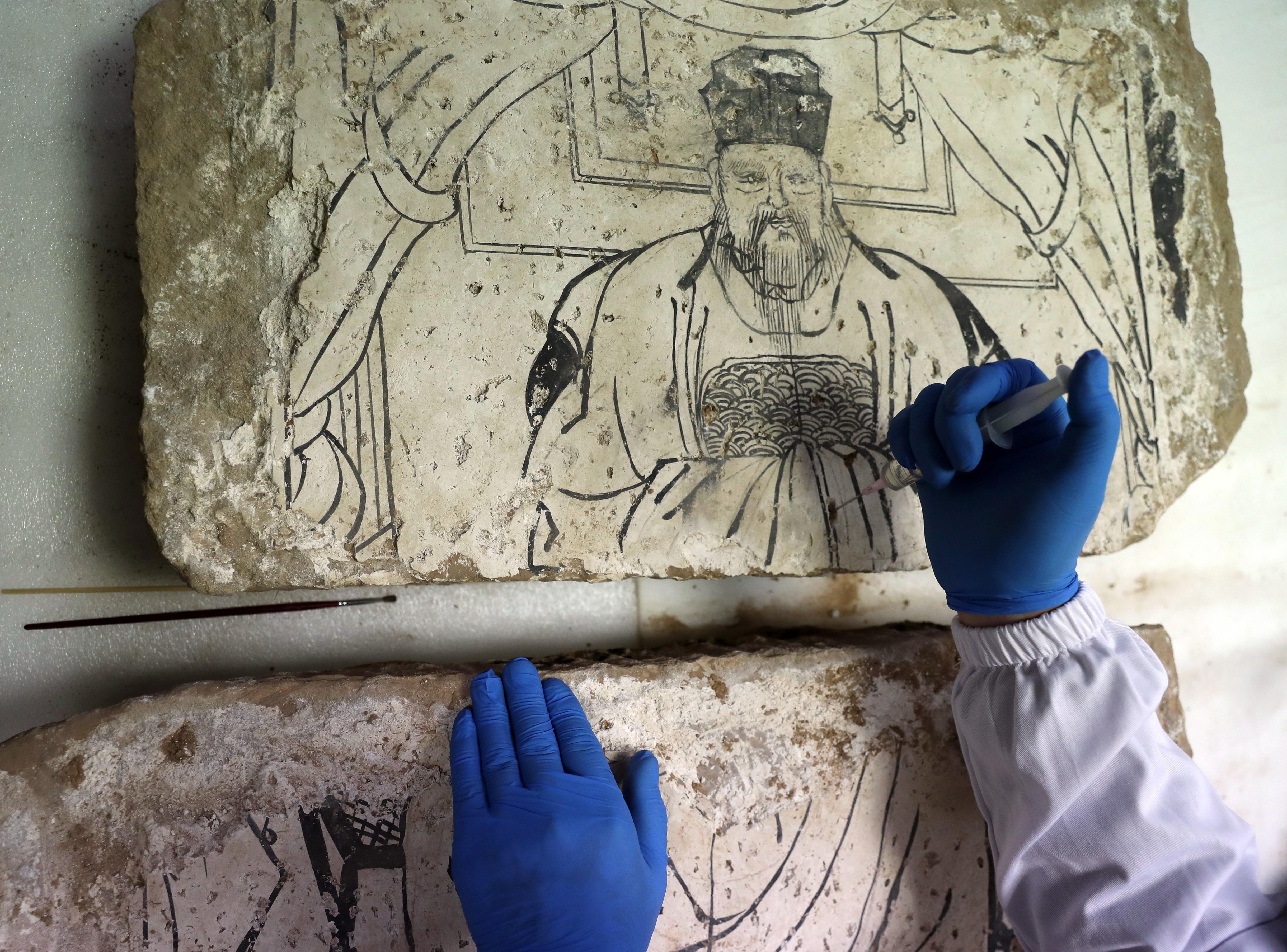 On March 23, at Shanxi Museum in Taiyuan, Shanxi, a restorer works on a mural, while another takes a photo of a relic. (ZOU HONG / CHINA DAILY)
On March 23, at Shanxi Museum in Taiyuan, Shanxi, a restorer works on a mural, while another takes a photo of a relic. (ZOU HONG / CHINA DAILY)
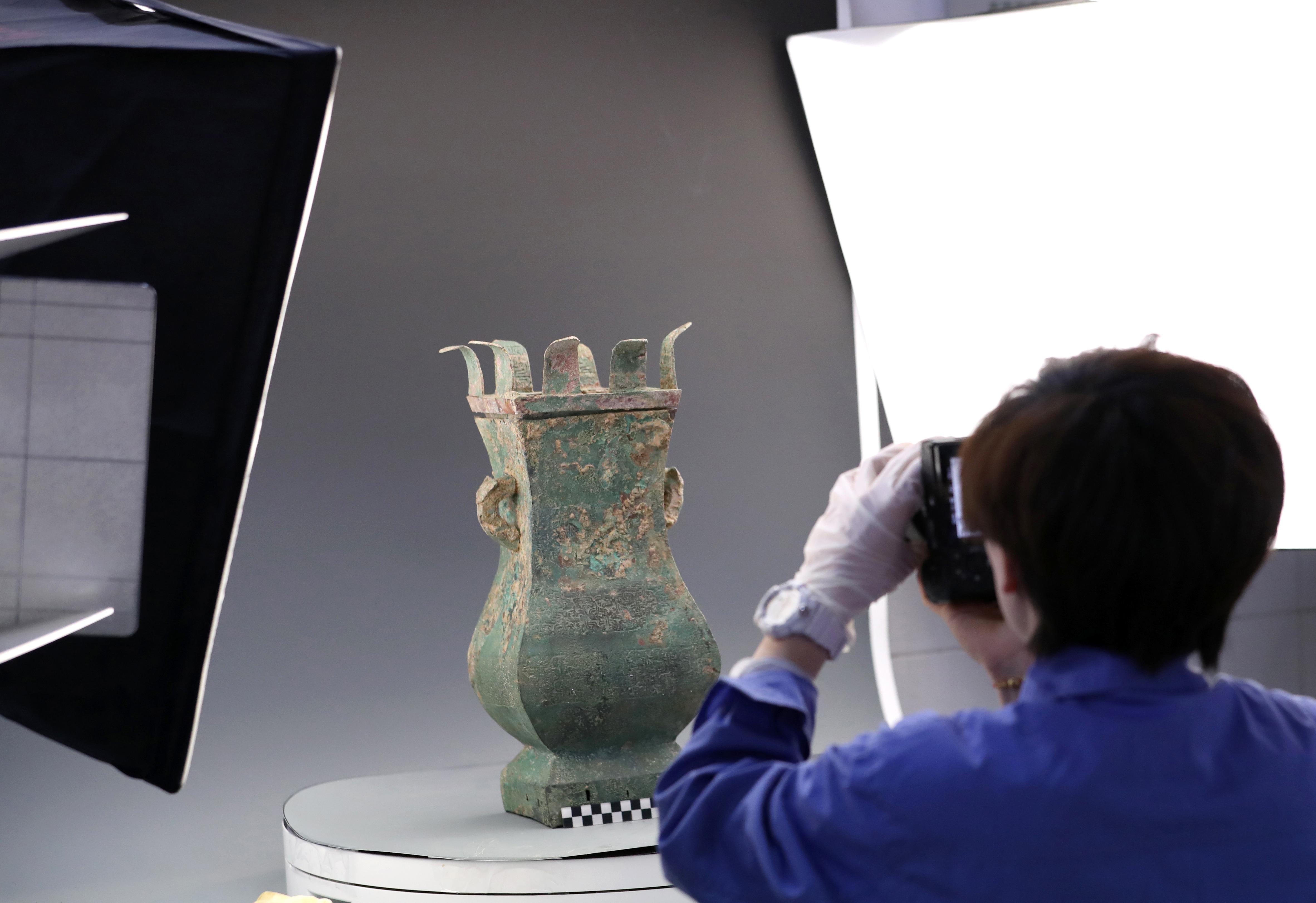 On March 23, at Shanxi Museum in Taiyuan, Shanxi, a restorer works on a mural, while another takes a photo of a relic. (ZOU HONG / CHINA DAILY)
On March 23, at Shanxi Museum in Taiyuan, Shanxi, a restorer works on a mural, while another takes a photo of a relic. (ZOU HONG / CHINA DAILY)
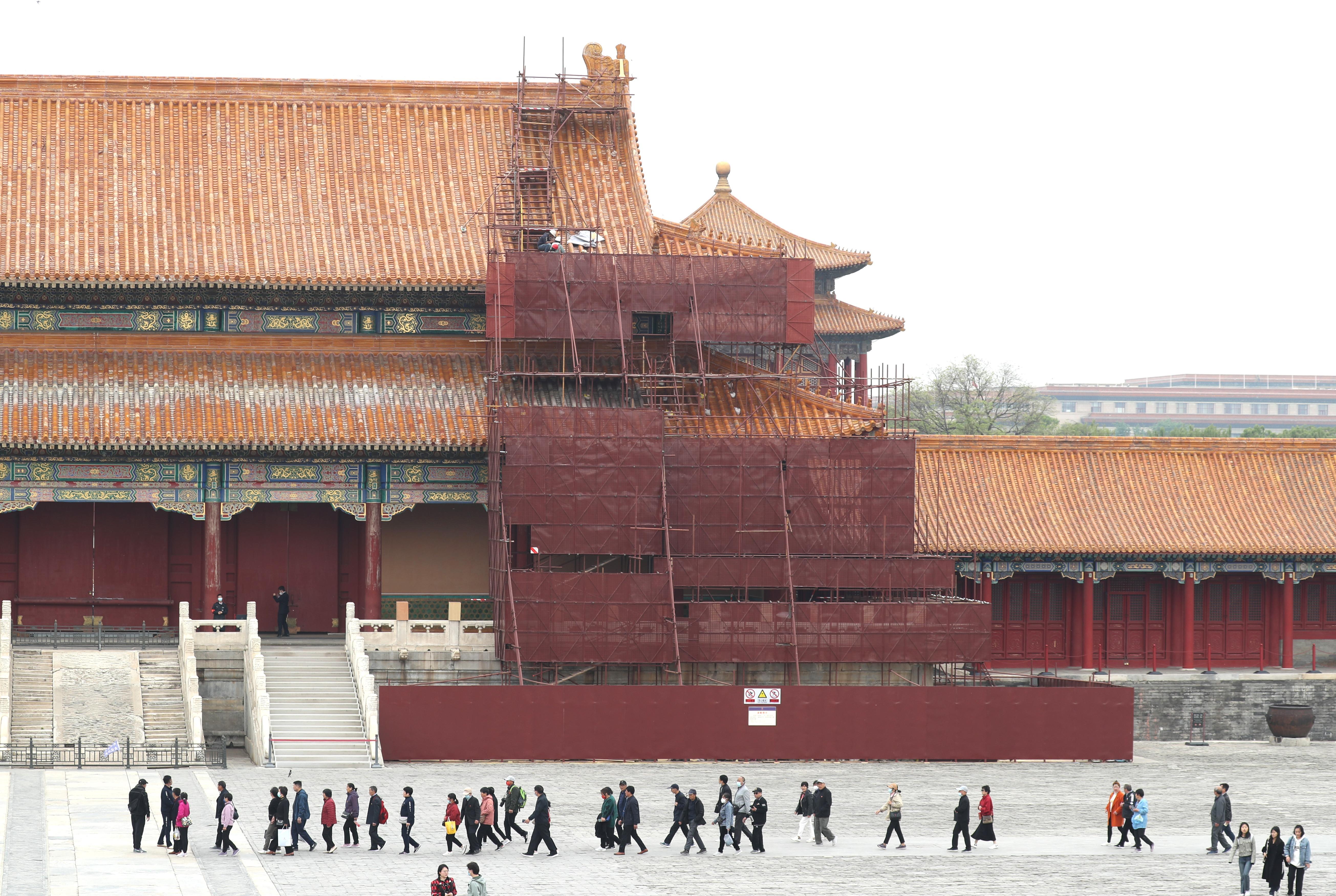 Tourists walk by the Gate of Supreme Harmony, which is under restoration, at the Palace Museum, on April 23. (ZOU HONG / CHINA DAILY)
Tourists walk by the Gate of Supreme Harmony, which is under restoration, at the Palace Museum, on April 23. (ZOU HONG / CHINA DAILY)
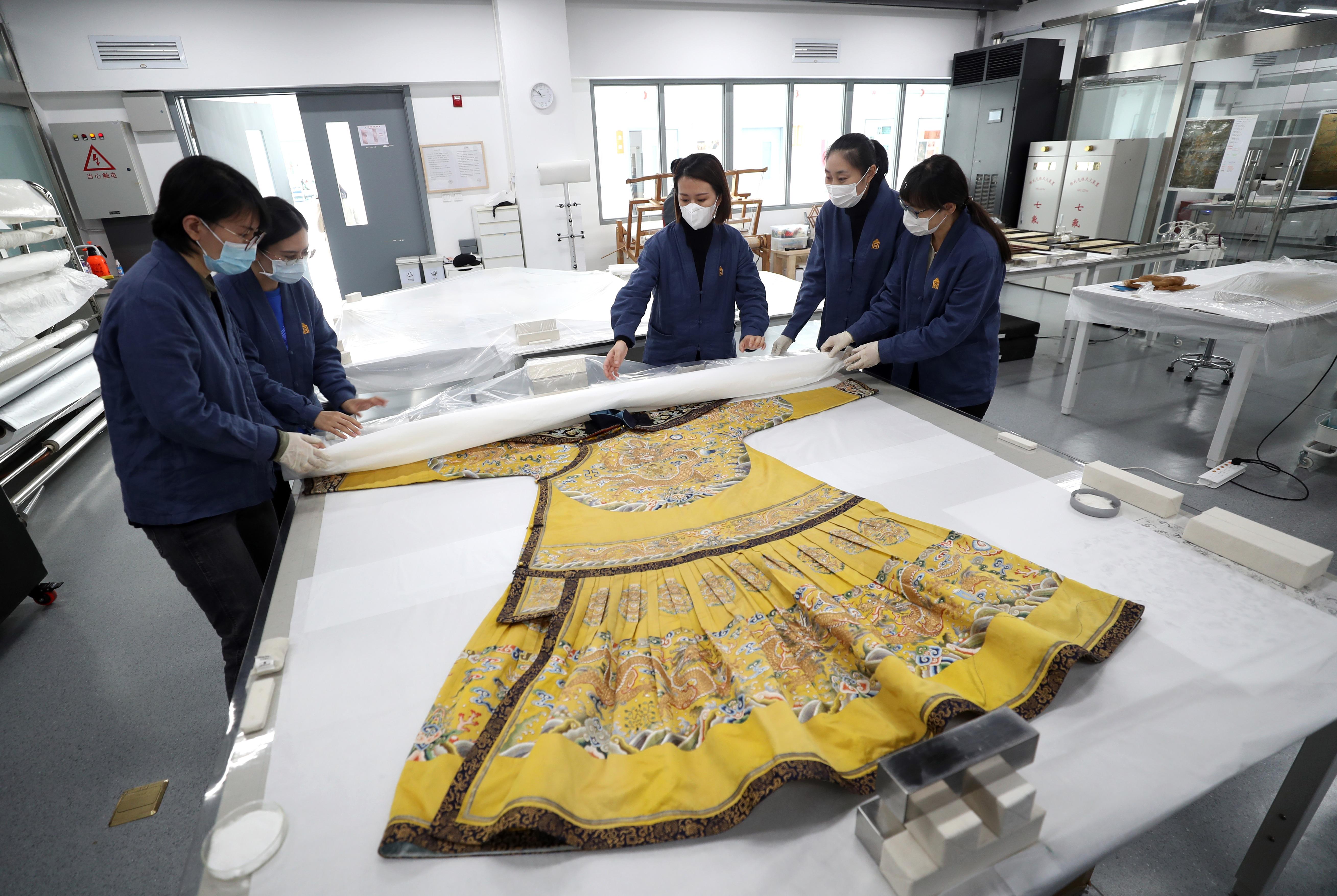 A group of five weaving and embroidery restorers at the Palace Museum examine an emperor's dragon robe after completion of its restoration, on March 7 last year. (ZOU HONG / CHINA DAILY)
A group of five weaving and embroidery restorers at the Palace Museum examine an emperor's dragon robe after completion of its restoration, on March 7 last year. (ZOU HONG / CHINA DAILY)
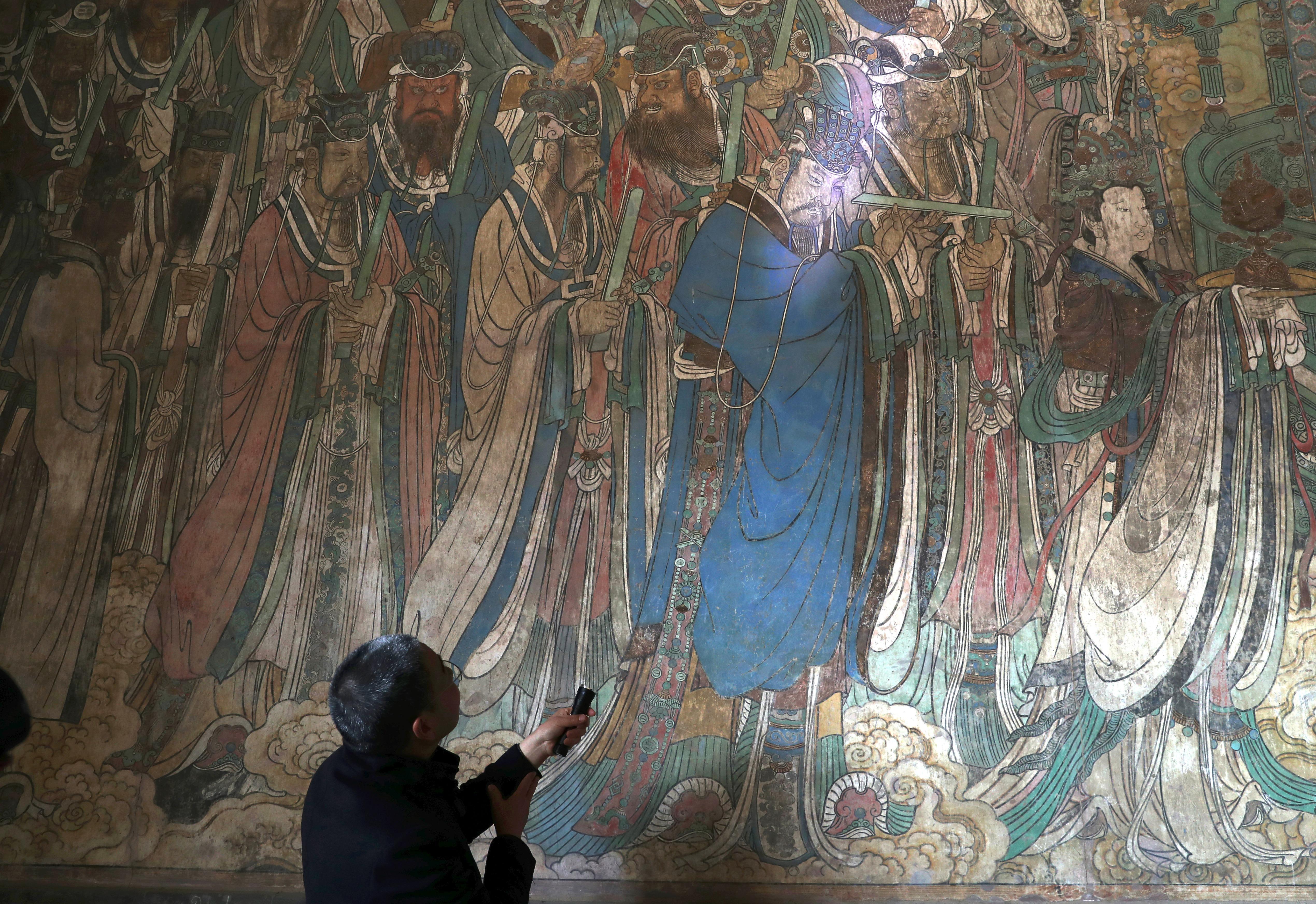 Xi Jiulong, head of the Yongle Palace mural art protection research institute, introduces a mural at the palace in Yuncheng, Shanxi province, on March 28.(ZOU HONG / CHINA DAILY)
Xi Jiulong, head of the Yongle Palace mural art protection research institute, introduces a mural at the palace in Yuncheng, Shanxi province, on March 28.(ZOU HONG / CHINA DAILY)
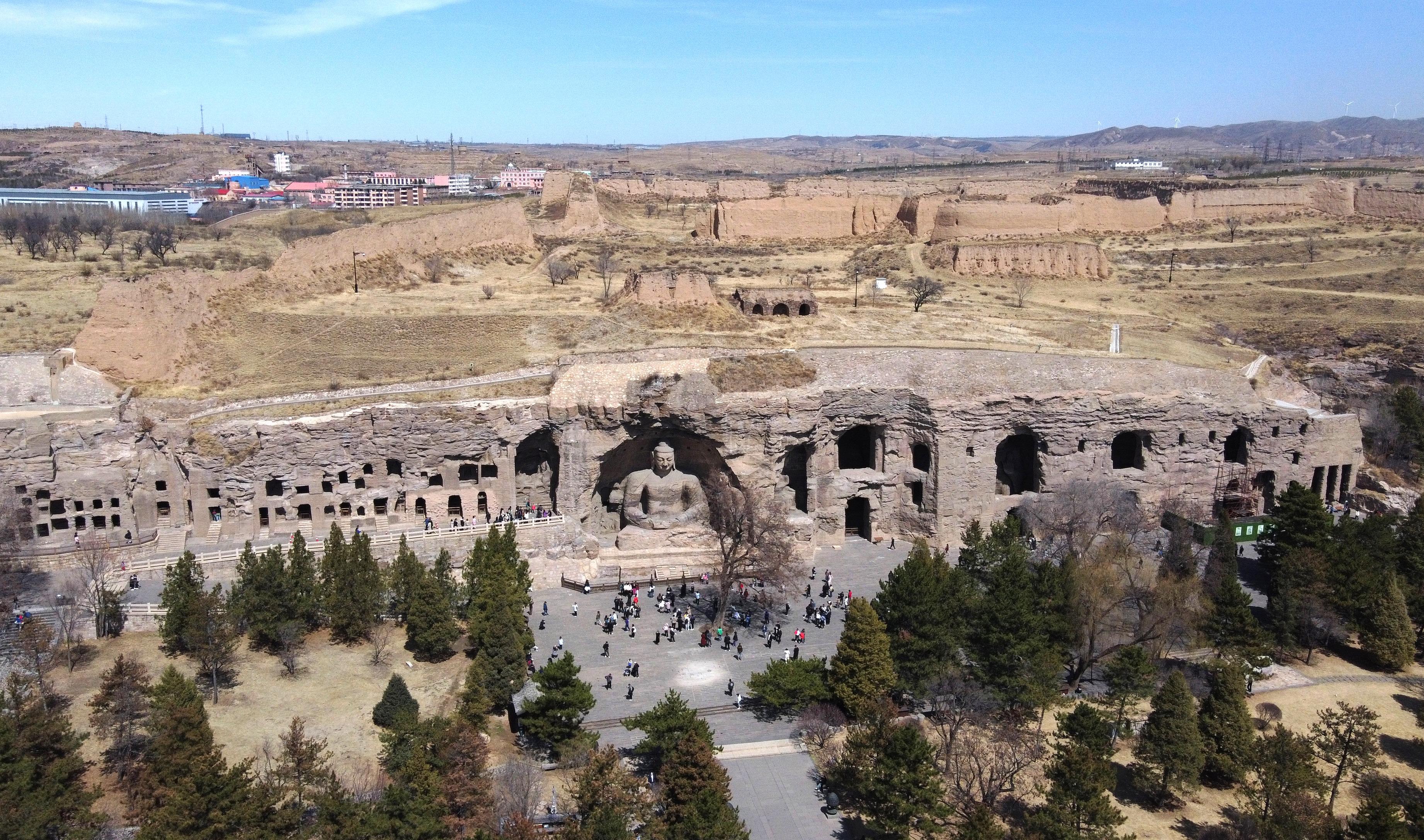 An aerial view of Yungang Grottoes in Datong, Shanxi, on April 8. (ZOU HONG / CHINA DAILY)
An aerial view of Yungang Grottoes in Datong, Shanxi, on April 8. (ZOU HONG / CHINA DAILY)
Contact the writers at wangkaihao@chinadaily.com.cn


